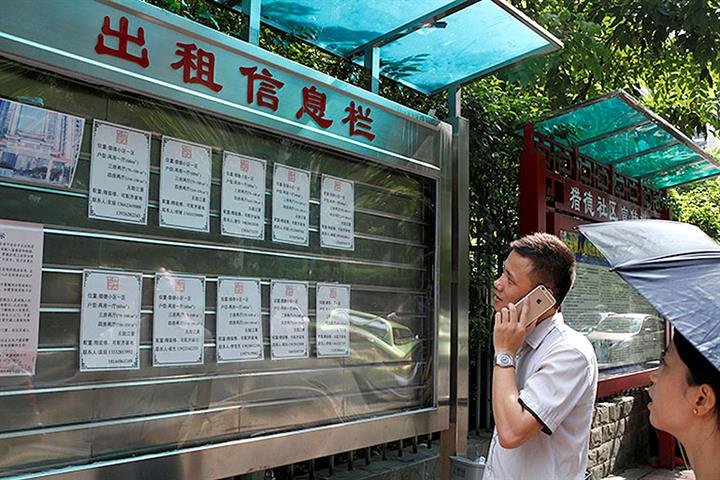 A Quarter of China's City Dwellers Rent, Survey Shows
A Quarter of China's City Dwellers Rent, Survey Shows(Yicai Global) July 15 -- A quarter of urban households in China lease their homes, with a higher proportion in cities with high migrant labor inflows and a bustling tourism industry, according to the latest census yearbook.
Some 25.6 percent of China’s urban households live in rented accommodation, the National Bureau of Statistics said, citing the country’s seventh national census conducted in 2020.
Those places with a high proportion of rentals are usually areas with big population inflows or a strong tourism sector, said Zhang Bo, director of real estate research firm 58 Anjuke Institute.
In Guangdong, the province with the biggest economy, 55.4 percent of its urban population leases, the yearbook said. Over half of the province’s urban population of 93.4 million is mobile, coming from outside the province or from other cities in the province. There is a particularly high proportion of renters in the cities of Dongguan and Shenzhen, where outsiders far outnumber the locals.
Fujian and Zhejiang provinces, also major manufacturing hubs on the southeast coast, were not far behind with 42.8 percent and 42.7 percent of their resident populations renting properties respectively.
While 46.2 percent and 39 percent of those who live in popular travel destinations such as the Tibet Autonomous Region and the island getaway of Hainan province lease.
In the major metropolises of Shanghai and Beijing, where housing prices are particularly high, 35.9 percent and 35.3 percent of residents rent respectively.
Nearly 60 percent of city dwellers buy their own homes, the yearbook said. Of this, 34.4 percent purchase newly built properties, 12.1 percent buy pre-owned homes, 7.8 percent go for public housing and 4.1 percent opt for affordable housing.
Those provinces with a moderate increase in housing prices have a higher proportion of home purchases. The three northeastern provinces of Heilongjiang, Jilin and Liaoning, for instance, have home purchase rates of over 80 percent.
Editors: Dou Shicong, Kim Taylor